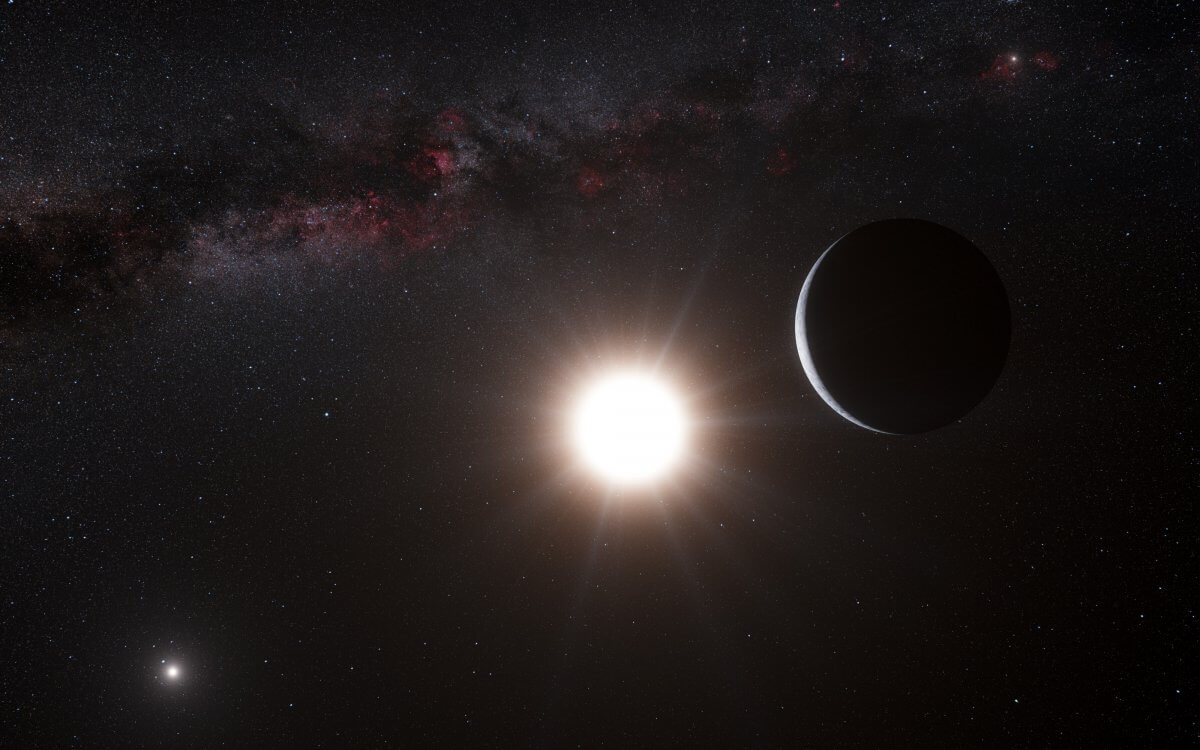- Get link
- X
- Other Apps

Deep beneath the surface of Mars, tiny microbial life can nest, it can splash in the subterranean oceans of Saturn's moon Enceladus, but these places are unlikely to be those where we find the first forms of life beyond Earth. The bad news is that humankind will most likely find the first extraterrestrial life too far to be visited.
“I think we can probably find life on another planet in the next decade or so,” says Christopher Impey, an astronomer at the University of Arizona. We will manage to do this by "exploring exoplanets that we discover in large quantities." Impey discussed this with other representatives of the American Physical Society at the April meeting on extraterrestrial intelligence.
Exoplanets are planets that exist outside of our solar system. The nearest exoplanet known to us today revolves around the nearest star Alfa Centauri B in 4.3 light years from Earth, but with our current technologies, the path to it will take about 100,000 years.
Why exoplanets?

Finding another life force outside will be quite difficult, regardless of where astronomers will look, but exoplanets have a number of serious advantages.
First, there are more earth-like exoplanets in our galaxy than in our solar system. The Earth, in fact, is the only planet of the earthly type in our district, Mars is following it, but with it everything is clear. Currently, there are more than 45 exoplanets in our galaxy, which are considered potentially habitable.
Another advantage is that it is cheaper and more efficient to search for life on exoplanets with the help of terrestrial instruments than to search for them in our own solar system.
Large government agencies such as NASA and the European Space Agency will have to land robotized probes on the surface of the Jupiter moon of Europe or to other promising places in the solar system, in order to find evidence of life. (The only exception may be the water-rich moon of Saturn Enceladus). At the moment, the only mission to land on solid ground in the plans of NASA is the mission of Mars 2020, which cannot even bury itself deep enough to find signs of life. This is why exoplanets look promising against this background.
“These missions cost billions of dollars and take decades, and the NASA budget is so small that it only takes one mission at a time,” says Impey. “I think, rather, the project on the study of terrestrial-type exoplanets will reach the goal.”
With powerful telescopes on Earth, scientists can sniff out extraterrestrial life throughout the galaxy by studying various gas cocktails in the atmospheres of these exoplanets. Only planets with a specific set of key elements and molecules have the potential to contain life.
Chemical recipe of life

Of course, all this without taking into account the fact that scientists are still discussing what should be the perfect cocktail.
For example, last year, the discovery of oxygen - an important element of life on Earth - in the atmosphere exoplanets perceived as an extraordinary discovery and immediately considered a sure sign of the existence of life.
But in May 2014, a couple of scientists - Robin Wordsworth and Raymond Pierhambert - suggested that worlds with a lot of liquid water can hold a lot of oxygen, but will be completely deprived of life. This is because the light from the star of the planet can have enough energy to separate the hydrogen and oxygen atoms that make up the water vapor in the atmosphere, after which the hydrogen will flow into space, leaving behind oxygen.
“Any hints of remote life detection outside the solar system will attract close attention,” says Jack O'Malley-James. “Thus, good knowledge of non-biological sources of atmospheric gases, along with methods for identifying these sources, will help make these hints more confident.”
However, until the end it is unclear what chemicals may indicate the presence of life. Impey thinks we should look for ozone (O3) and methane (CH4).
New fleet of giant revolutionary telescopes

While scientists like Wordsworth and Pierhambert are exploring where to look for life, astronomers and engineers are working on tools that we will use in search of life outside of our solar system: they build the largest and most powerful telescopes in history.
“The exoplanets are far away and they are very dull,” says Impey. “You need a large surface to collect light from an earth-like planet at such a distance.”
This surface in the telescope is determined by the size of the so-called mirror, which collects light from distant objects. Astronomers study this light by identifying various chemical signatures in the atmosphere. Just as each person has unique fingerprints, each element has a specific light signature, which astronomers determine using spectroscopy.
It will take the most powerful telescopes in history to detect the dim light signatures of these molecules of distant exoplanets. Now astronomers at institutions around the world are building three huge next-generation telescopes: two in Chile and one in Hawaii.
The giant Magellan telescope (GMT) will be three times the size of any modern telescope and will be able to produce images 10 times clearer than the Hubble Space Telescope. It is currently under construction at the Las Campanas Observatory in La Serena, Chile, and is scheduled to open in 2024.
The thirty-meter telescope (TMT) is expected to be able to produce images 12 times clearer than the Hubble Space Telescope and is scheduled to work on top of the extinct Hawaiian Mauna Kea volcano in 2025. However, recent protests have slowed construction.
The European extremely large telescope (E-ELT) will have a mirror larger than that of GMT and TMT. The construction of the E-ELT began in June 2014 in Cerro-Armasones, Chile, and this colossal telescope will begin operation in 2024.
Three of these huge telescopes will be able to observe distant worlds and, perhaps, simply perhaps, will make the most important discovery in the history of mankind, will answer the question teasing our curious minds: are we alone?
The article is based on materials .
- Get link
- X
- Other Apps
Comments
Post a Comment